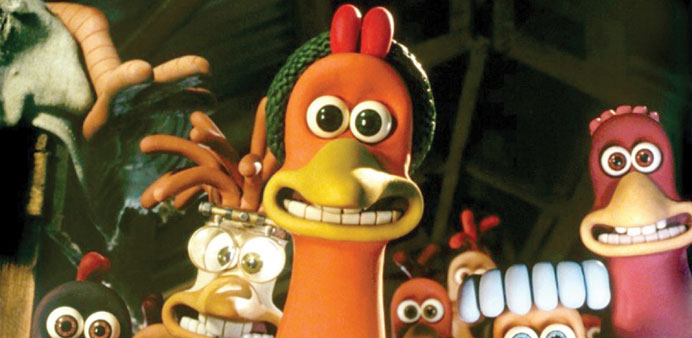By Anand Holla
If you have always wondered about the fantastic world of animation but didn’t know where to start, a brisk two-week character animation workshop hosted by Doha Film Institute (DFI) might just be the jumpstart that your imaginary toon friends need.
Offering a basic introduction to various animation techniques and the filmmaking practices involved in them, the workshop is mentored by Peter Peake. The UK-based animation director’s more than 23 years’ experience in the industry attests to his mastery of a range of techniques including Stop-Motion, CGI, Flash, and Live Action.
Suitable for beginner to intermediate applicants, the workshop is open only to residents of Qatar and will go on from October 24 to November 5. However, to participate in the workshop, you will have to submit your CV or short biography, and a copy of your Qatar Residence Permit or Qatari passport, along with an email to [email protected]. The deadline for submission is Tuesday.
“With an emphasis on character animation, the workshop is structured around lectures and practical exercises,” says the DFI. The first week will allow students to explore stop-motion animation by creating their own simple clay figures and then using them to produce a short test piece. The second week focuses on 2D computer animation using Adobe Flash and provides students with an outline of the software and an opportunity to use it to create their own animated work.”
The workshop’s lectures cover areas such as model-making, concept/story/scripting, character design, art direction, storyboarding and animatics, sound and editing in animation, the role of the director and animation in advertising. Stop motion animation, for instance, is animation captured one frame at time, with physical objects that are moved between frames. When you play back the sequence of images rapidly, it creates the illusion of movement. Once you understand how 2D drawn animation works, stop motion is easy to figure, except it uses physical objects and not drawings.
The basic process of animation involves taking a photograph of your objects or characters, moving them slightly, and taking another photograph. When you play back the images consecutively, the objects or characters appear to move on their own.
Peake started working majorly for Bristol-based Aardman Animations in 1992 as a freelance animator. He worked on various short films and commercials for clients including Mita, Cadburys and Lurpak. “In 1994, he wrote, directed and animated his first short film for Aardman, Pib & Pog, which was BAFTA nominated in the same year and went on to win the McLaren Award at the Edinburgh Film Festival,” says a bio on Peake on animwork.dk.
Soon, Peake was a key animator on Nick Park’s Oscar-winning A Close Shave and the first series of Richard Goleszowski’s Rex The Runt. As a stop-motion key animator, Peake’s work on A Close Shave included developing the character of Shaun the Sheep. In 1998, he wrote and directed Humdrum, his second short for Aardman. “This won several awards worldwide including a second McLaren Award, the Audience Prize at the British Animation Awards and nominations for Best Animated Short in the BAFTAs in 1999 and the Oscars in 2000,” the bio says.
Four times Oscar-winning studio, Aardman Animations, of course, are best-known as creators of Wallace & Gromit, Chicken Run and The Pirates! In an Adventure with Scientists! Aardman films have made USD969 million worldwide and average USD161 million per film. In fact, their stop motion films are among the highest-grossing stop-motion films; their debut, Chicken Run, being their top-grosser as well as the highest-grossing stop-motion film ever.
Peake has continued to work wonders with films such as the half-hour special Robbie the Reindeer II – Legend of the Lost Tribe for Comic Relief and BBC Worldwide, which won an International Emmy. Peake now continues to work with Aardman, directing television series, short films and commercials for clients including Coca Cola, Hotels.com and Wrigleys. His most recent short film for Aardman, Pythagasaurus, was completed in 2011.

SUPER HIT: Chicken Run by Aardman Animations is the highest-grossing stop-motion film ever.


